Some of our cats can be particularly greedy. At mealtime, they pounce on their bowl as if it were the last one, and often end up vomiting their kibble or pâté. Their small stomach cannot handle this rapid food intake... Why does my cat eat too fast? How can I help it regulate? We tell you everything in this article.
My cat eats too fast: vomiting, bloating, and risk of obesity
Meow, Miaouuuuuuuuu. Hearing its little meows, it’s time to eat. Your cat looks at you with soft eyes, rubs against you (leaving some hair on your nice pants). In short, it puts on a real seduction show. But as soon as its bowl is set down, it rushes and devours its pâté or kibble in the blink of an eye. Not a crumb left. And shortly after... it vomits! A nice little pile on the floor or your couch. Thanks, kitty!
If your cat eats too fast, rest assured, it’s not alone. Some cats can indeed be particularly greedy. But this behavior should not be taken lightly, especially if this rapid food intake often leads to vomiting.
Repeated vomiting can not only lead to dehydration, but it can also cause serious deficiencies in your beloved little cat because it will not have absorbed all the essential nutrients present in its food (provided it is of good quality). Its digestive tract will also be irritated.
For other greedy cats, no vomiting, but flatulence. Yes, a rapid food intake can also cause gas. By eating too fast, they swallow a lot of air. Result: they have bloating and fart excessively. For our whiskered friends, farting is not always a sign of good health. They have stomach aches, and are uncomfortable.
Finally, this rapid food intake can have another effect on your furry friend's health: overweight, even obesity. The satiety mechanism in cats is like ours; the faster they eat, the less time their stomach has to signal to their brain that they are full. This can lead to overeating and thus a risk of obesity. To learn more about feline eating behavior, especially the 3 stages experienced around meals, feel free to read our article Why is my cat always hungry.
Why does my cat eat too fast?
The reasons are many. It can be a dietary or behavioral problem.
On the dietary side, it may be inadequate, not meeting its nutritional needs; not enough protein and/or poorly digestible, too high quantities of carbohydrates which are rapidly metabolized by the body.
Also note that many cat foods contain additives and flavor enhancers that increase palatability. So faced with its bowl, your cat can only be excited. It cannot control itself and devours its meal in seconds. It’s exactly like us in front of a fast-food burger and fries tray “come as you are,” we rush at it (well, almost).
It’s hungry!
In the wild, our whiskered friends can hunt all day and night to have up to 20 small meals daily. They are true little nibbles. Our domestic cats don’t need to hunt to eat, but their feeding style remains the same. They like to have several small meals throughout the day and night. If your cat only receives one or two meals a day, it can feel frustrated and therefore eat its food quickly.
At Ziggy, we recommend at least 4 wet meals per day for our companions, to best respect their nature as small nibblers. If you work outside, you can split your cat’s meals as follows: one in the morning at waking, then another before leaving. In the evening, you can give another portion when you come home and before going to bed. We also recommend giving a small amount of kibble in a toy during the day or night as a bonus.
What if I give kibble ad libitum?
Kibble is indeed well adapted to our cats’ nibbling behavior. You can give kibble ad libitum, provided the quantity is controlled—matching the daily ration—and that your cat is able to self-regulate. You can provide some kibble in a dispenser toy that slows down food intake.
Keep in mind though that an exclusive dry food diet hardly meets your cat’s hydration needs (water). It is also more calorie-dense: kibble has on average four times the calories of pâté! An overweight or obese cat is at higher risk of developing diseases such as diabetes. Favor a 100% wet diet or a mixed diet (pâté and kibble).
"My cat only devours and vomits its pâté"
Your cat may also feel frustrated here because you only give pâté occasionally.
Unfortunately, pâté is often MISTAKENLY seen as a treat. However, it is a complete food. Full pâté is absolutely not a treat, it can be given multiple times a day! It is actually the food closest to the natural needs of cats.
Introducing a new food should always go through a transition phase to help your cat’s digestive system adjust. For more info, feel free to read our article on food transition.
It is stressed
A cat that eats too fast is often a stressed cat. It can be disturbed at mealtime: being petted, its bowl placed in a busy area, etc.
It can also be afraid of missing out because it frequently shares its bowl with another cat. If you have welcomed another animal into your family, it may feel competitive and, instinctively, want to protect its food. "Hands off, that’s my pâté."
It is bored
Outside, our cats spend several hours hunting, running, climbing, and playing. In short, they never get bored. Some indoor cats, on the other hand, may lack stimulation and feel bored. This can lead them to seek refuge in food. Again, our furry friends are very much like us. When bored, we eat (and not carrots).
Here too, the cycle is vicious because a bored cat moves little, drags its paws, and can gain weight.
It fears scarcity
Your cat may fear scarcity because it shares its bowl with another cat. But this fear can also come from its past.
In fact, some cats have had difficult experiences (cat rescue, abandonment, or abandonment by the mother cat). It is then not uncommon to observe behaviors of abandonment and scarcity: eat fast and voraciously to protect oneself, guard food, etc.
He might be sick
A cat that suddenly becomes greedy is not something to take lightly. It can be a sign of an illness. Several diseases can indeed cause an increased appetite in cats, leading to rapid food intake. It could be a parasitic disease (intestinal worms), diabetes, or hyperthyroidism.
My cat eats too fast: how can I help him regulate? Eat more slowly?
As we have seen, the causes are multiple. If your cat eats too fast, and especially if he frequently vomits his meals afterwards, first consult your veterinarian. They will be able to check his health and try to identify the cause of his unusual eating behavior.
Wet and quality food
To promote the feeling of satiety, the ideal is to favor wet food, namely pâté. Thanks to its high moisture content, it adds volume to our cats' stomachs without the accompanying calories.
Yes to pâté, but containing quality proteins! Among quality proteins are fish, meat, eggs, and offal. In feline nutrition, the protein/phosphorus ratio of a food provides an indication of the quality of proteins used. These ratios are very high for good proteins. This is not the case for cereals, carcasses, and bones used in many cat foods.
At Ziggy, our cat pâtés are very rich in quality proteins (+60%). We do not use reconstituted meat, mechanically separated meat (MSM), or animal "waste" like carcasses, skin, feathers, or fish bones. You will only find real muscle pieces and fine offal (chicken, beef, pork). Moreover, they contain a minimal amount of carbohydrates (-2%), which, as a reminder, are not necessary in our feline diet.
Finally, if your cat still shows greedy behavior even with pâté, you can add a few boiled zucchini cubes to his food. Appreciated by our cats, this vegetable is rich in water and adds volume to our little companions' stomachs.
As a reminder, facing a greedy cat, doubling the amount of his food is useless. This would be a big mistake, as your cat will gain weight. An overweight or obese cat is more likely to develop diseases such as diabetes. Your cat must feel full without increasing calorie intake. Hence the importance of offering him wet and quality food!
How much pâté should I give my cat?
It all depends on his size, weight, and age.
To easily and accurately determine the amount of food to give your cat, feel free to use our ration calculator.
Several small fractioned meals
To regulate your cat's appetite, fractioned meals are the key. Ideally, give him at least 4 meals a day to best respect his nature as a little nibble-eater.
These fractioned meals will also reassure cats who are afraid of missing out. They will gradually understand that they will always have food under your roof. And over time, they will learn to regulate themselves better and no longer experience the stress of an “empty bowl.”
This technique has notably proven effective for a member of our Ziggy Family, Ineka.
“My little cat was found in a pizza oven of an abandoned restaurant. The association that saved her fed her well, but she still rushed to the bowl out of fear of missing out. I established 6 small meals a day: a teaspoon of pâté, in addition to her kibbles. Ineka regulated herself. She still has some phases even after 5 years, but fractioned meals work well,” tells us Marine.
Note that rations must of course be adapted. For that, you can use our ration calculator above 😺
A calm and stimulating environment
If you can, place his bowl in a quiet place, away from any disturbance, and where no other animal or human can bother him during meals. Your whiskered friend will feel more confident and enjoy his pâté more calmly.
“Bulimic” cats are also cats that get bored. If your cat has no outdoor access and you are often absent, it is important to mentally and physically stimulate him by providing toys, hiding places, or a cat tree. Also, give him access to windows so he can observe outside. Our fur balls are little watchers; they love knowing what is going on outside, watching birds, passersby, etc. In short, front-row seats.
Regulate your cat with a fun bowl
To slow down his food intake, you can finally try investing in one of these accessories:
- A slow feeder bowl
- A kibble ball
- A maze. Your cat has to move the kibbles to get them.
- A licking mat. This accessory is ideal for pâté. Just spread the portion on the mat, and kitty will have to lick it. He won’t gulp his pâté and will have no choice but to take his time to savor it.
- An ice cube or canelé mold in which you can incorporate pâté and/or kibbles.
These bowls are effective, but be patient. For your cat to get used to it and understand how it works, proceed step by step. Split his portion in two: one part in his usual bowl and another on his licking mat, for example. Let’s not forget that our cats are creatures of habit. The slightest change can upset them. Your feline will no longer rush to his food; on the contrary, he will reject it.
If despite all these tips your cat continues to eat too fast, don’t hesitate to consult your usual veterinarian or a veterinary behaviorist. They can help you understand why your furry friend acts this way and give you the keys so he can regulate himself. We have listed here the main causes and solutions, but each cat is unique. That’s why we love them so much ❤️


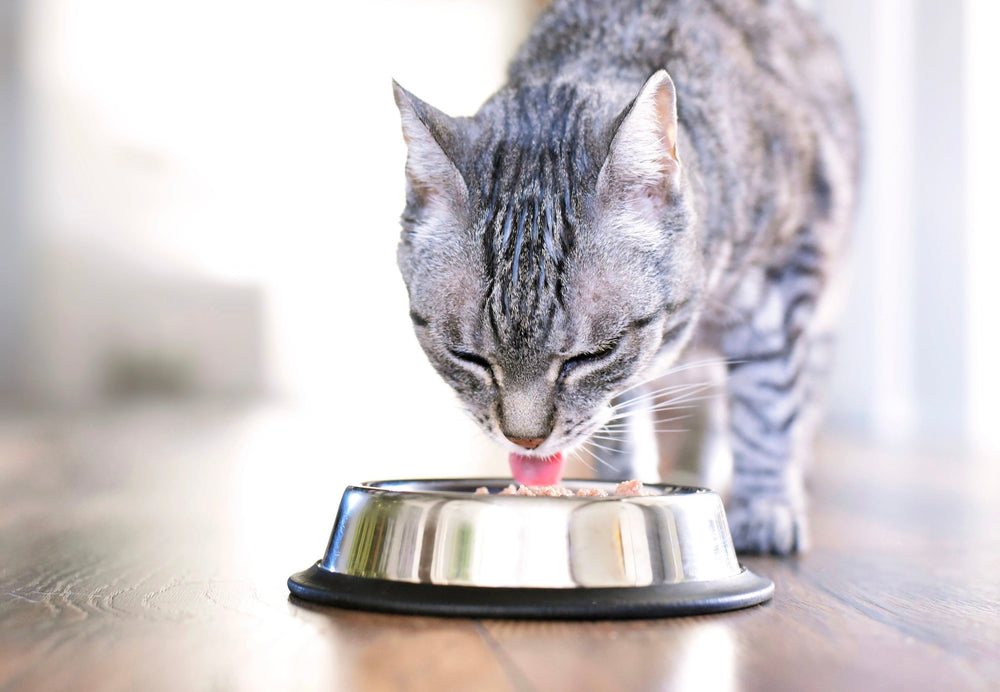
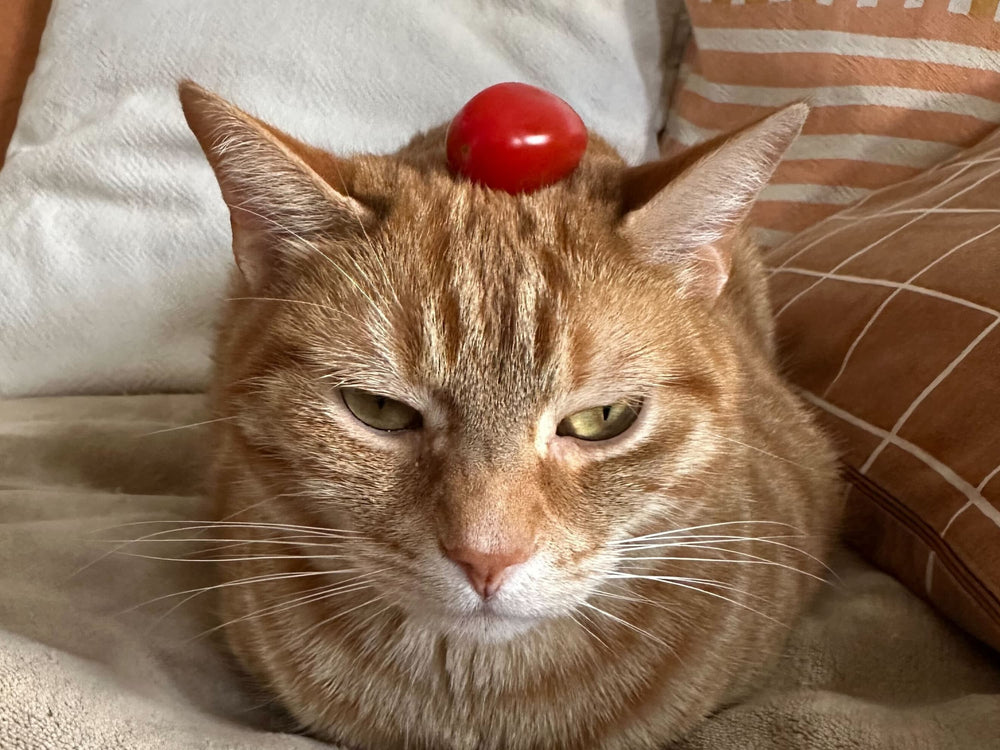
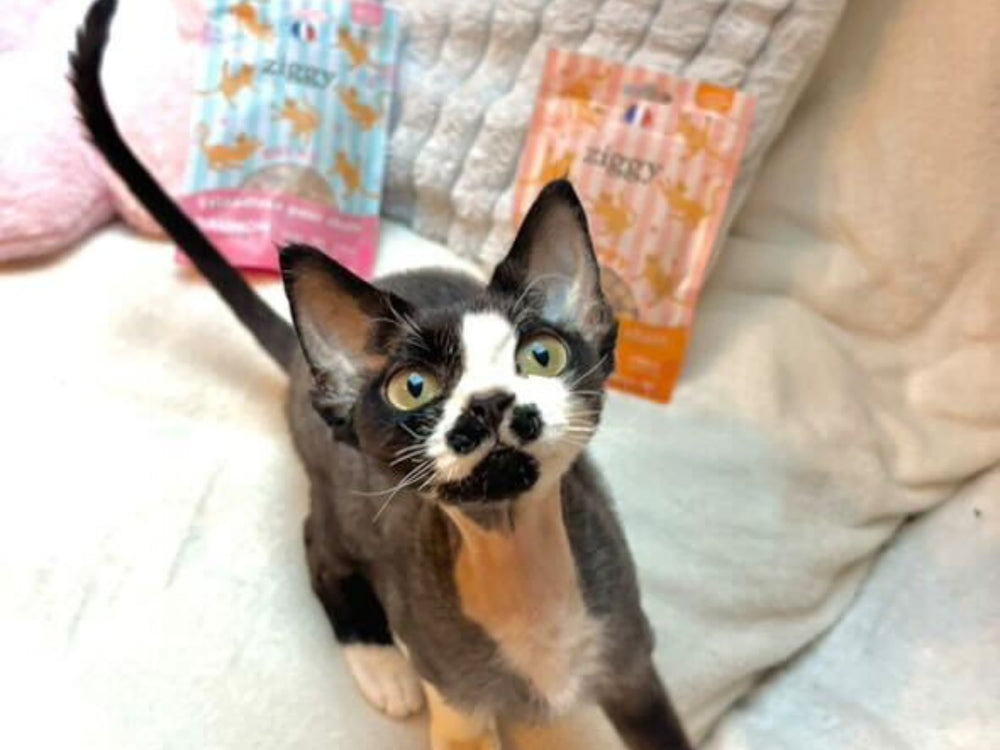
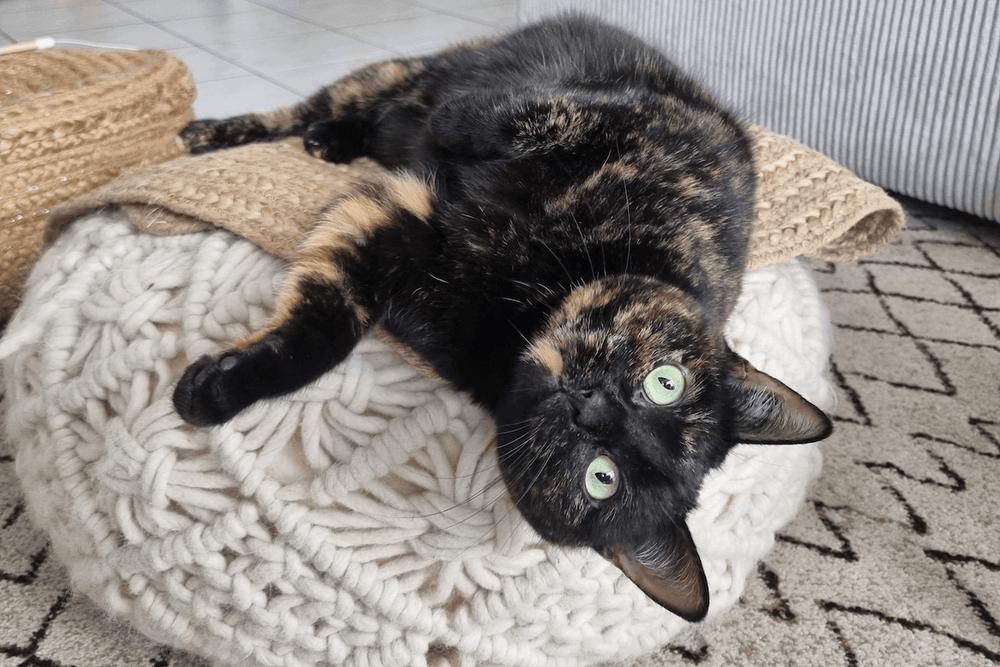
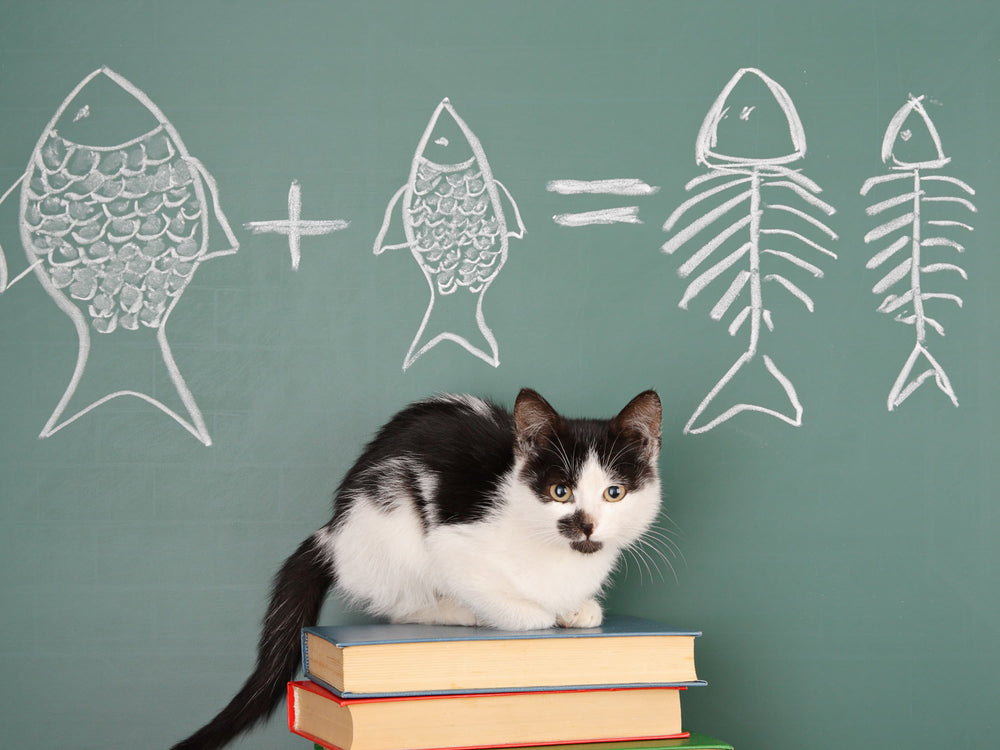
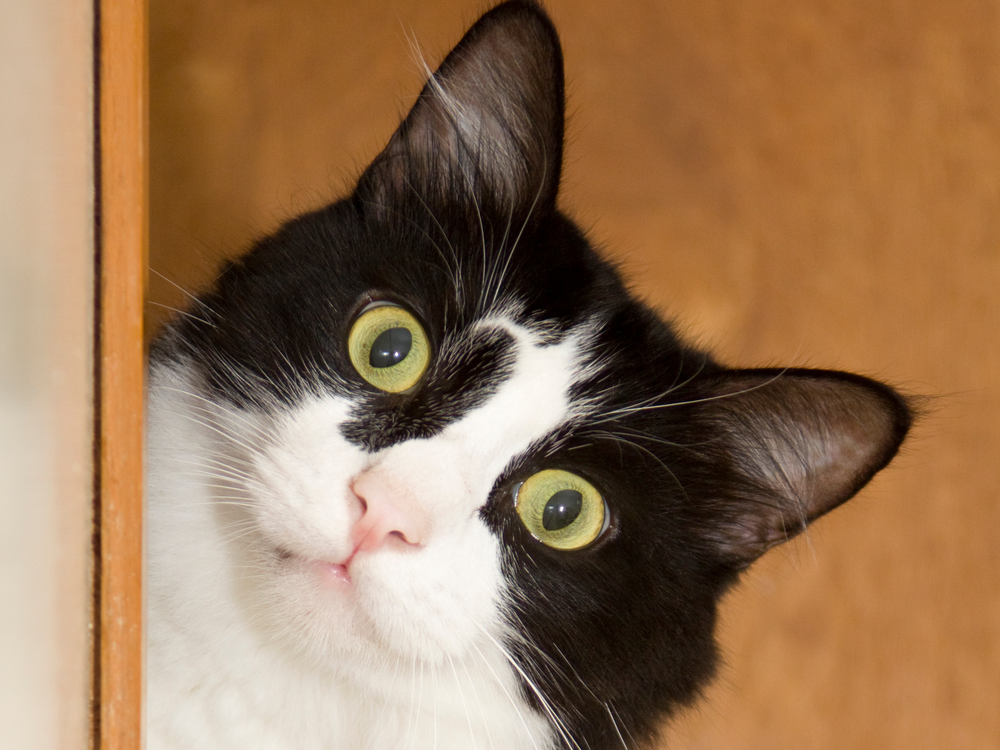
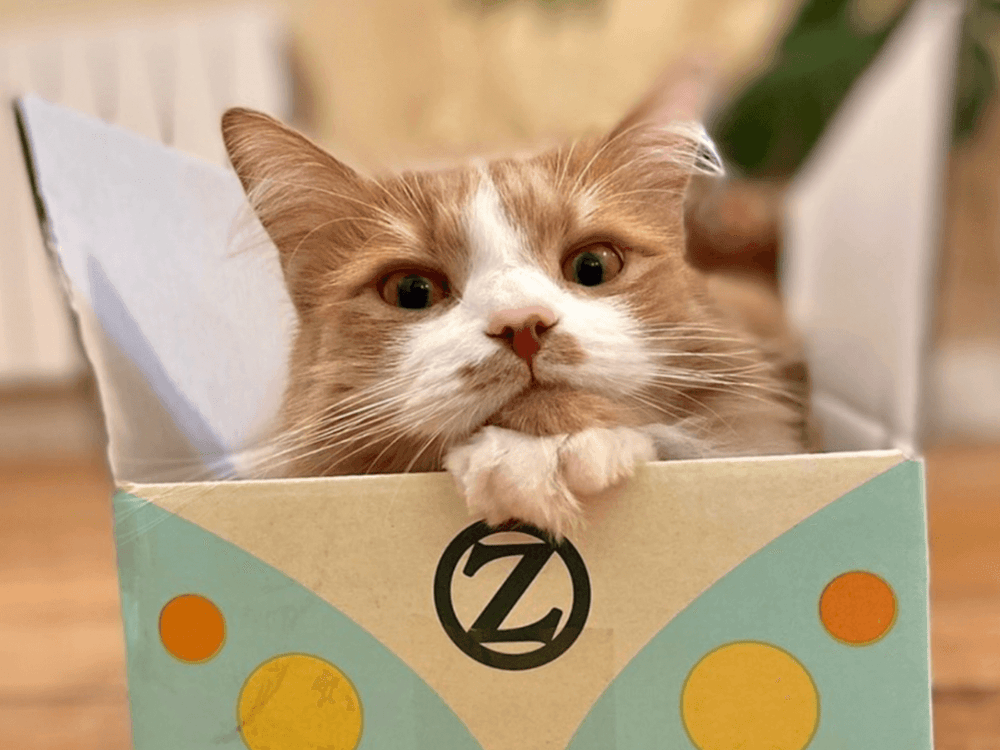
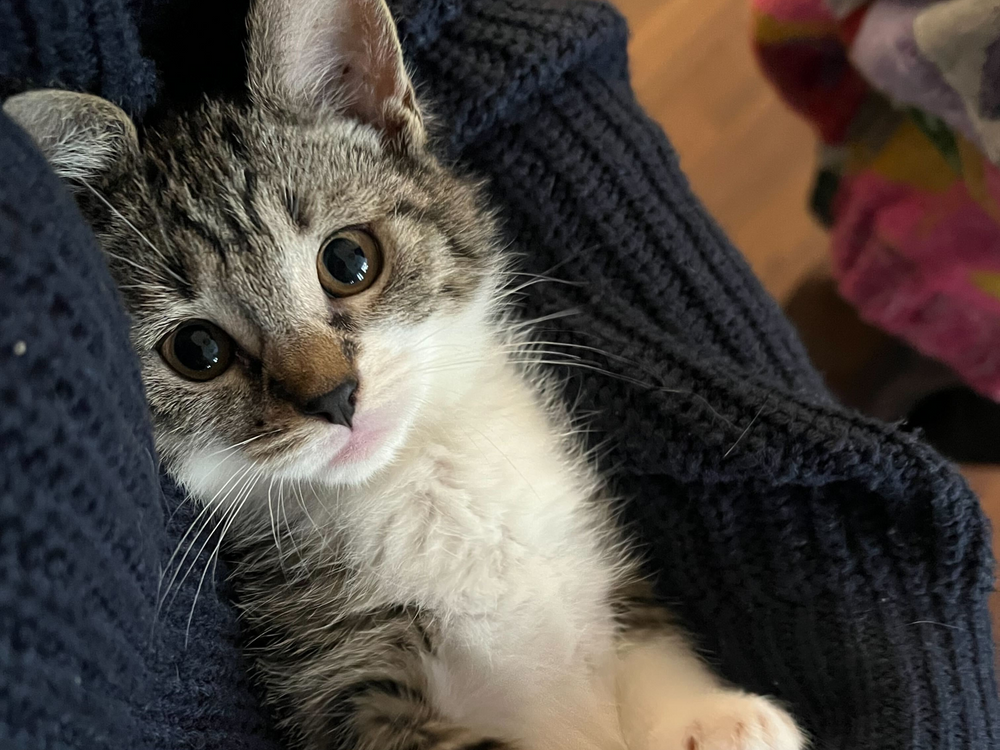
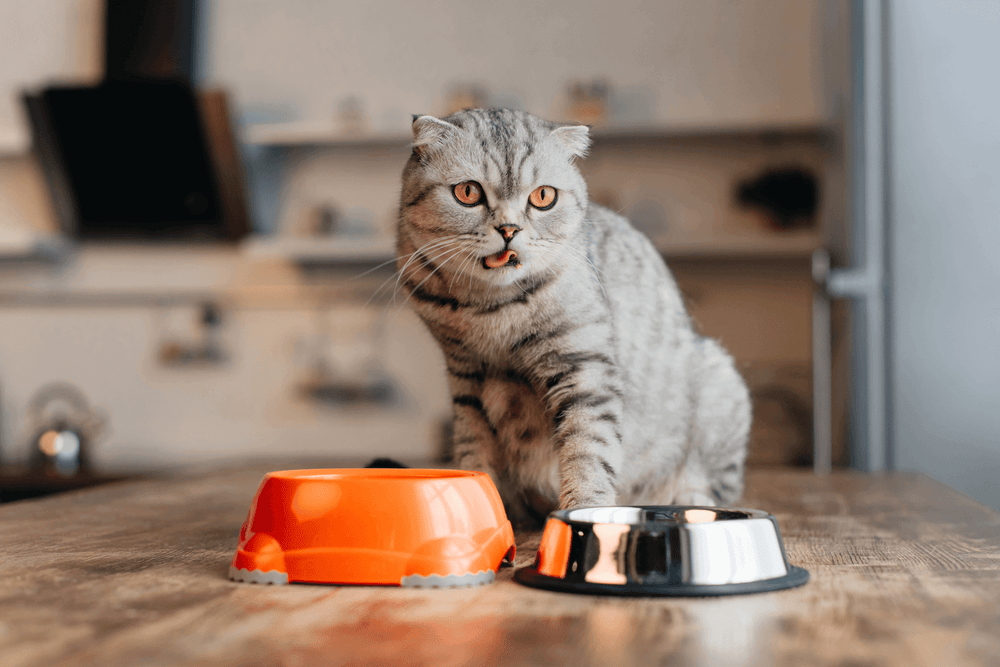
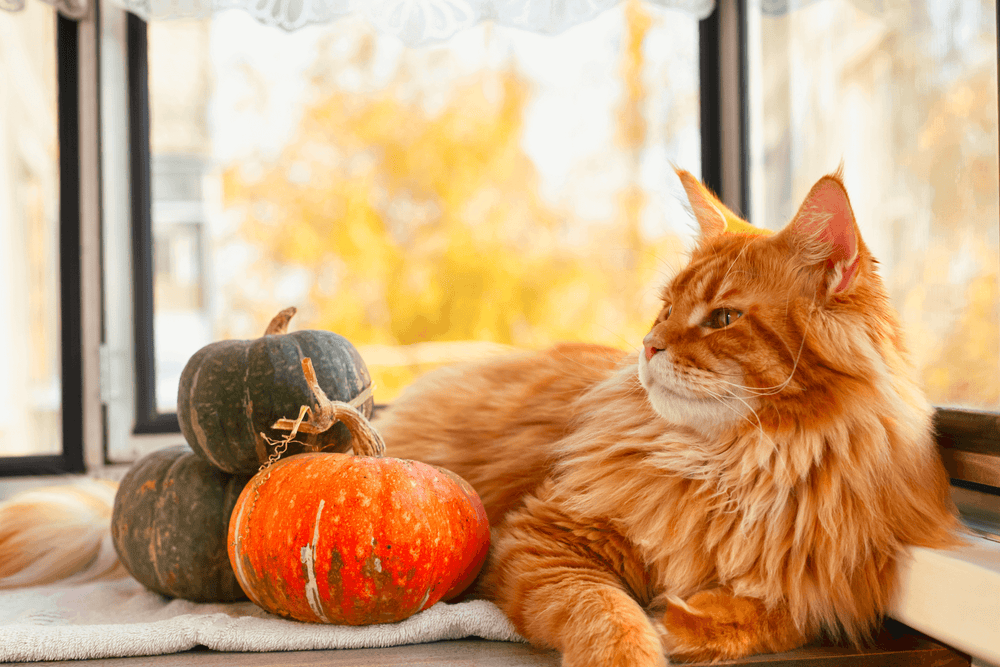
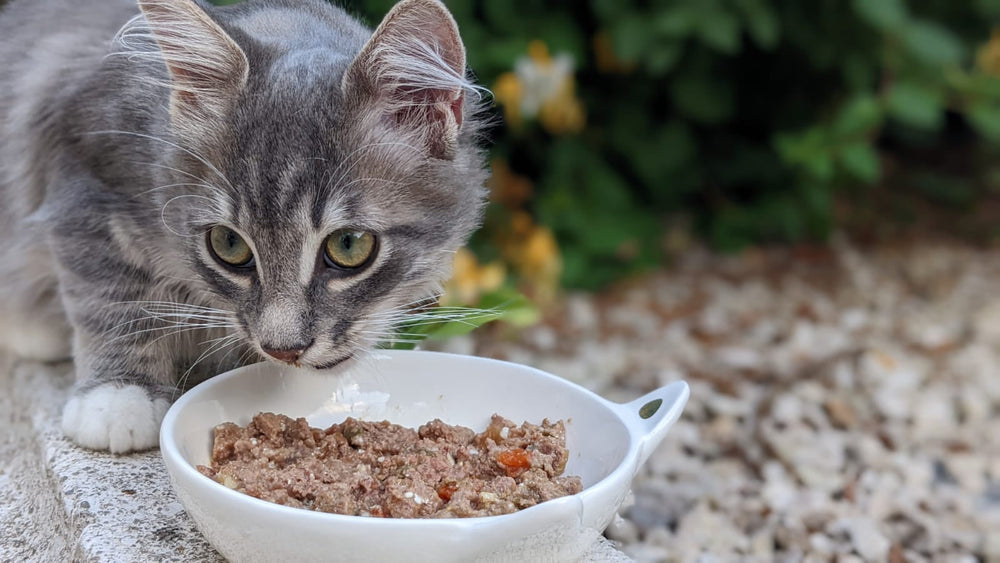
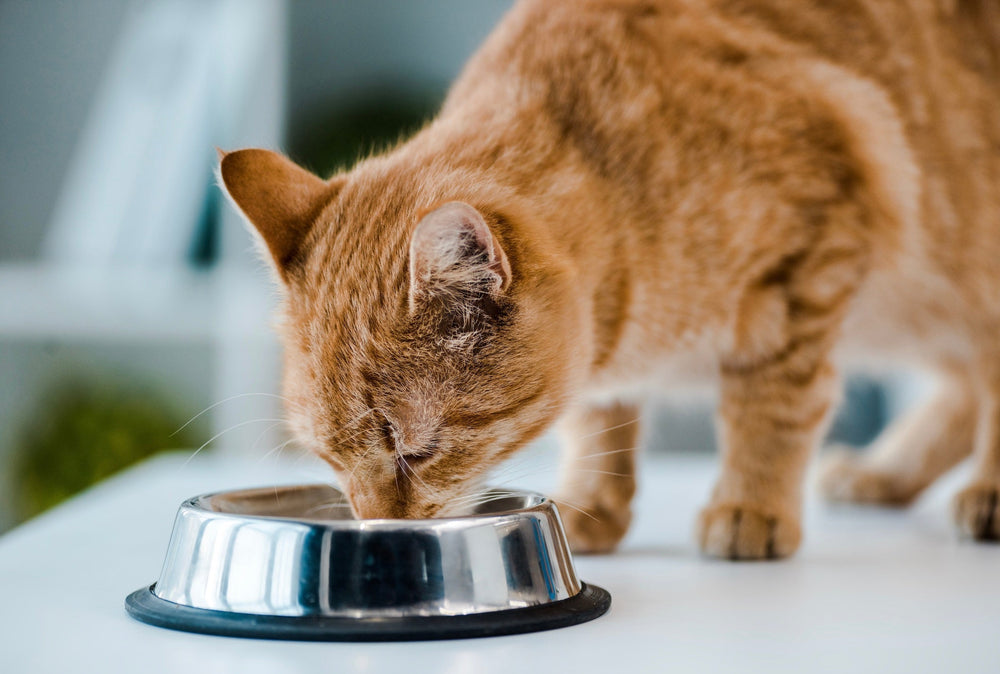
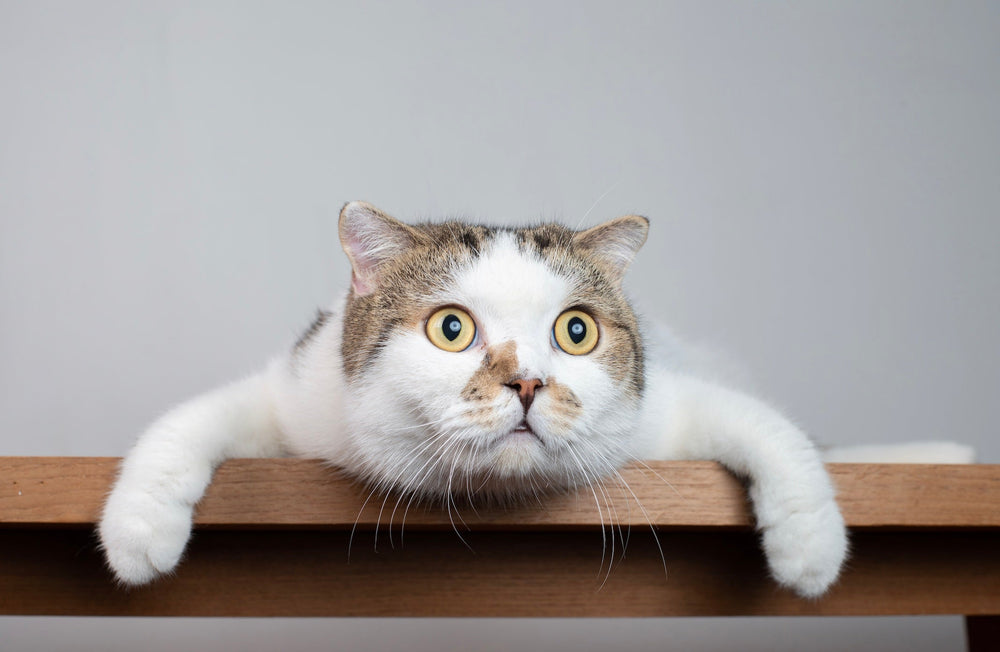
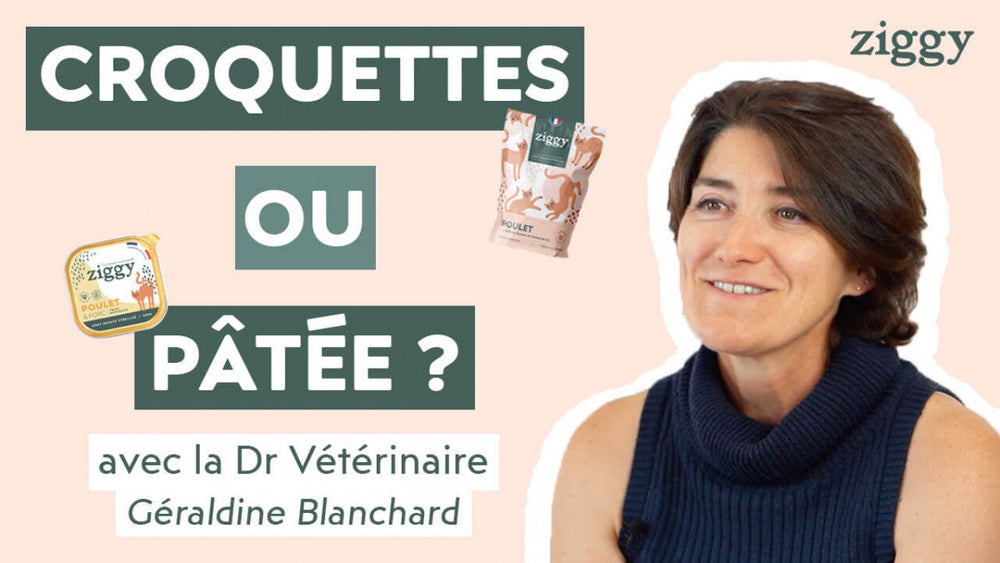
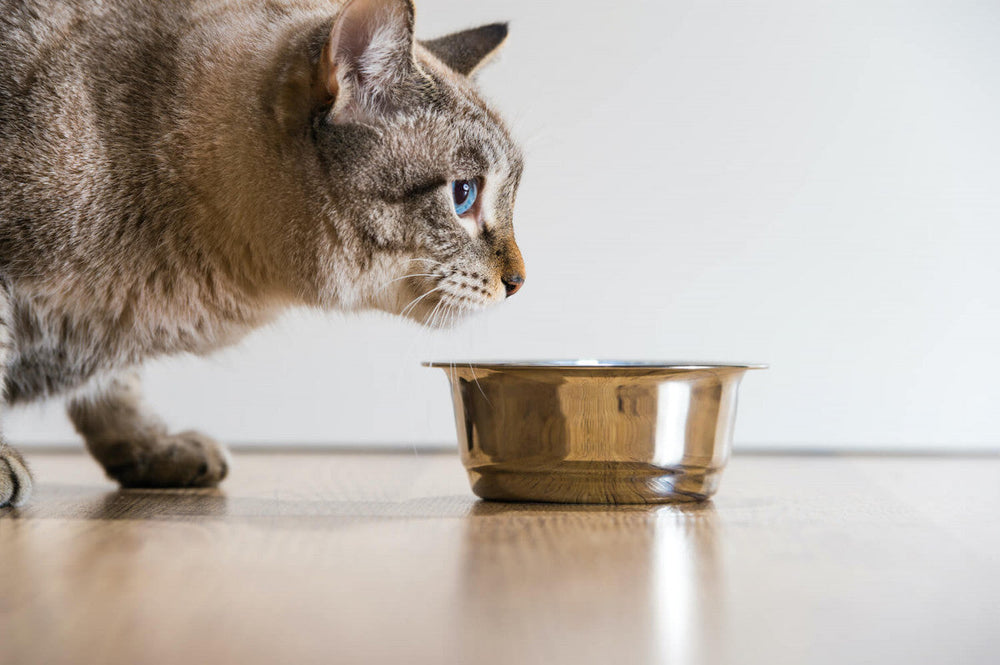
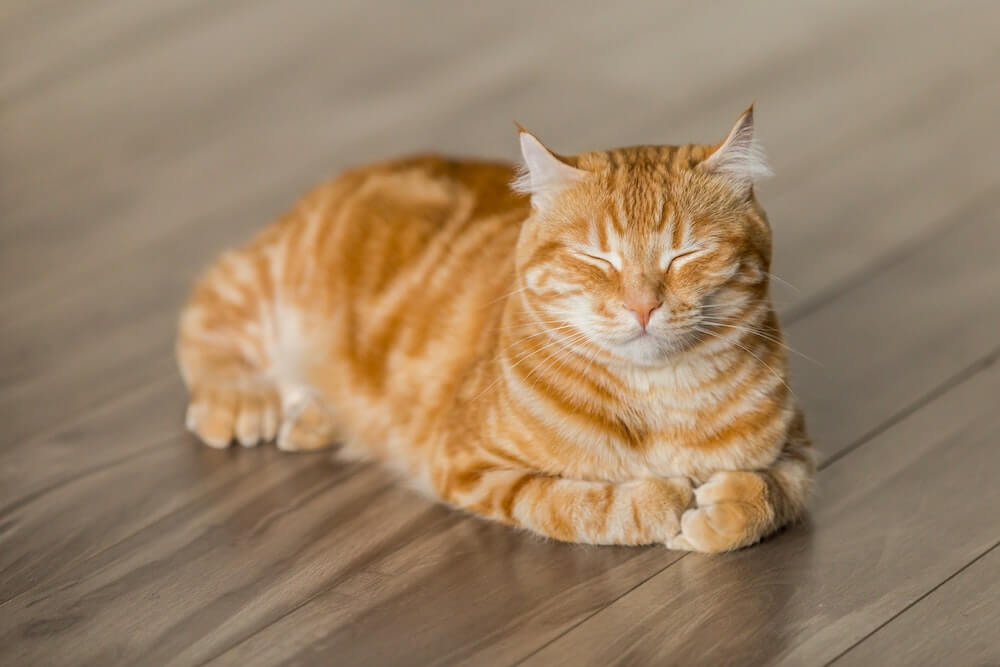
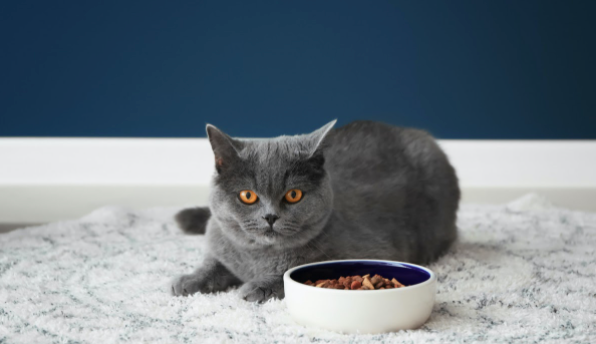
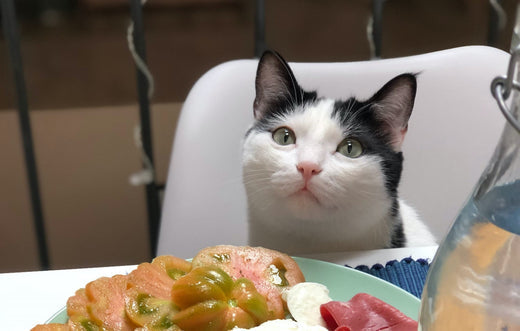
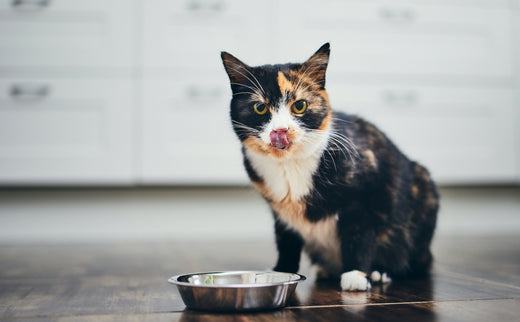
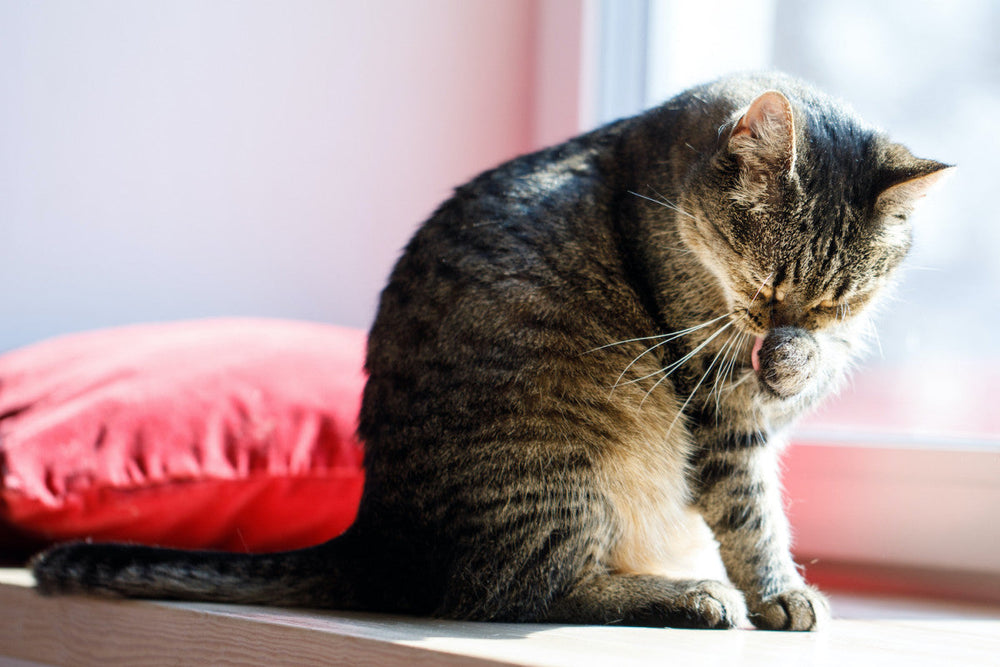
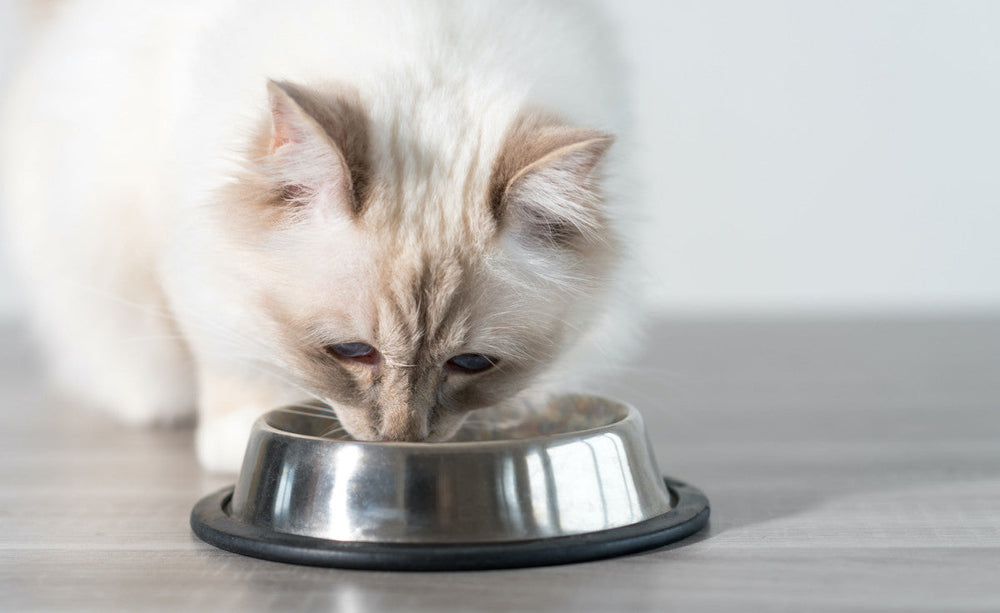
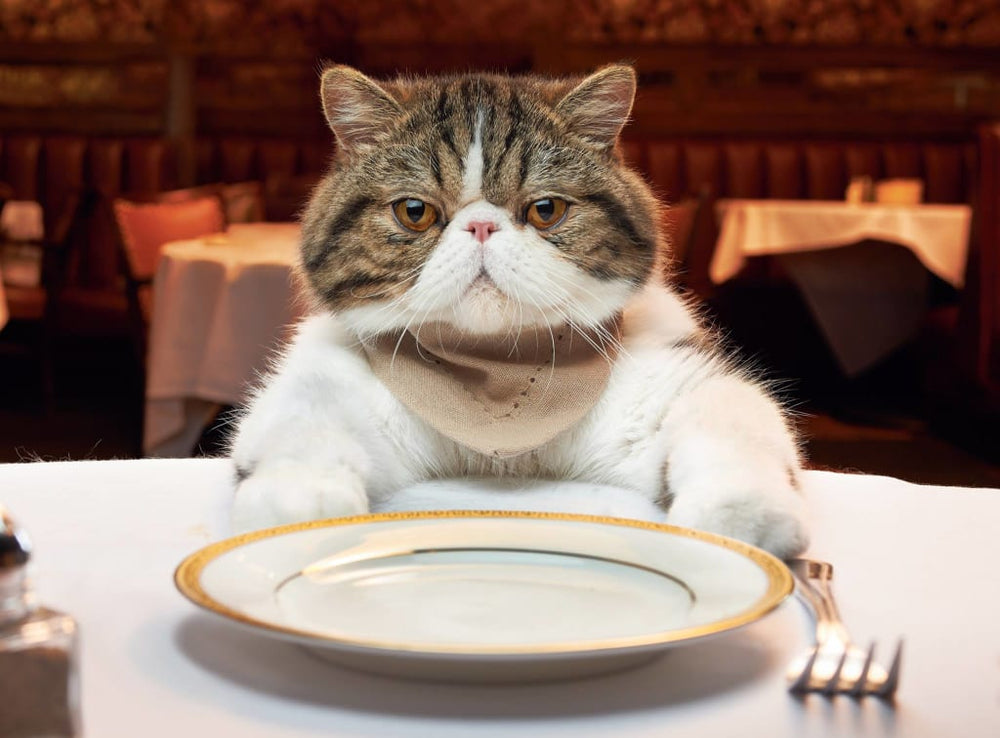
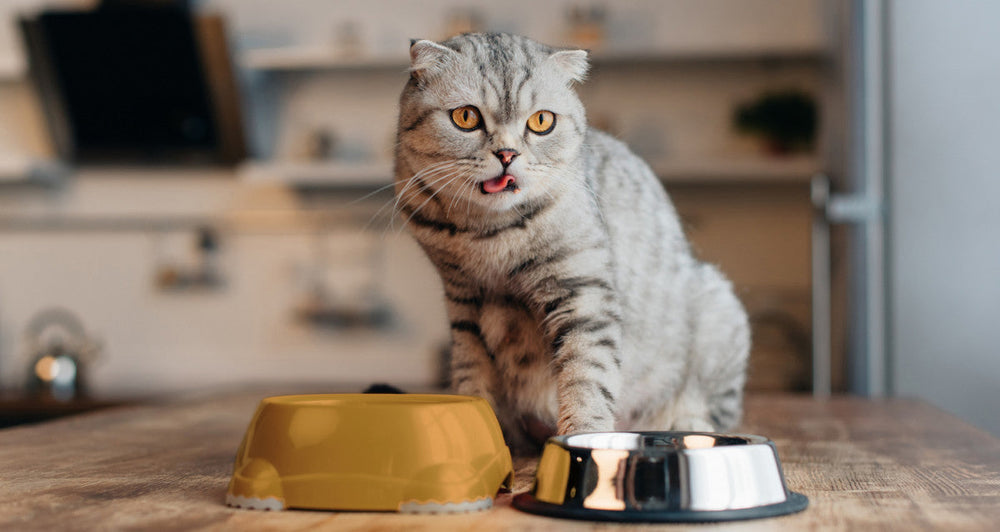
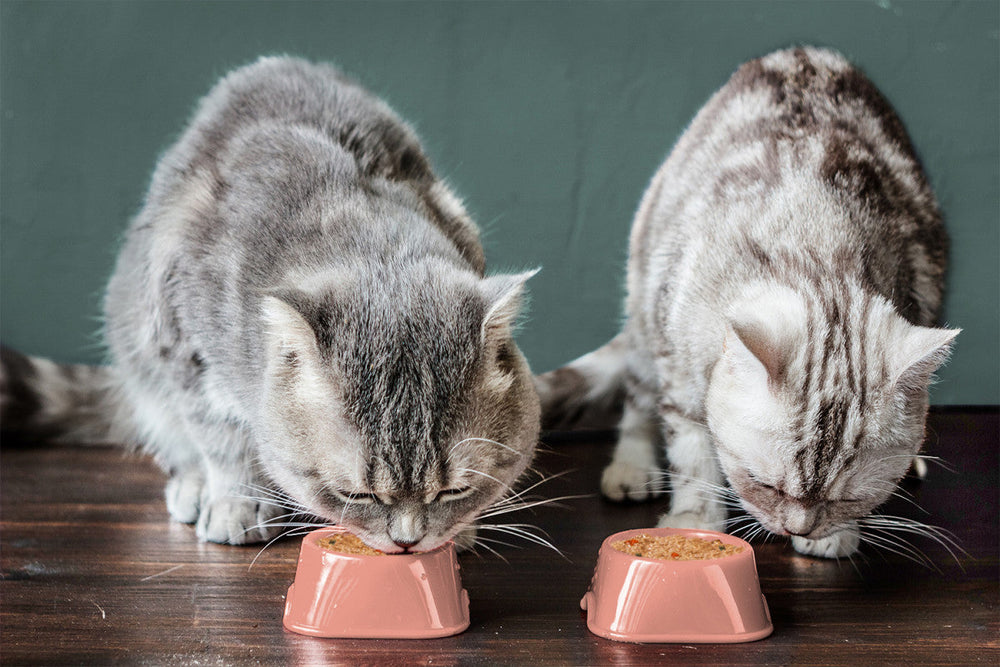
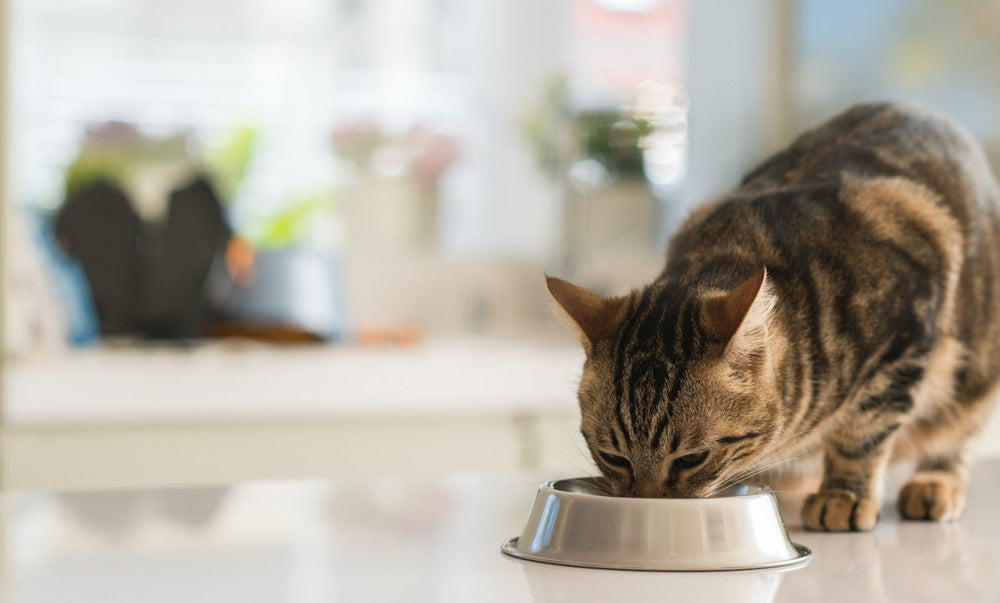
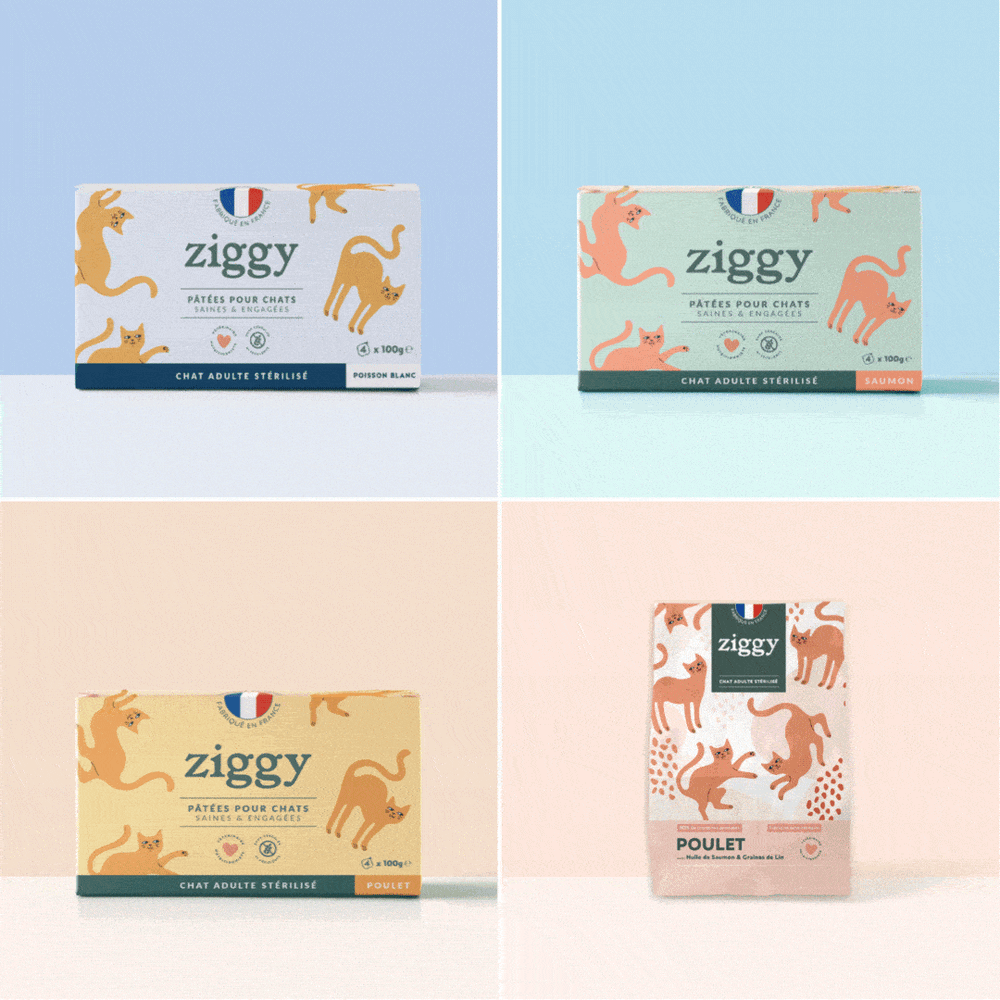
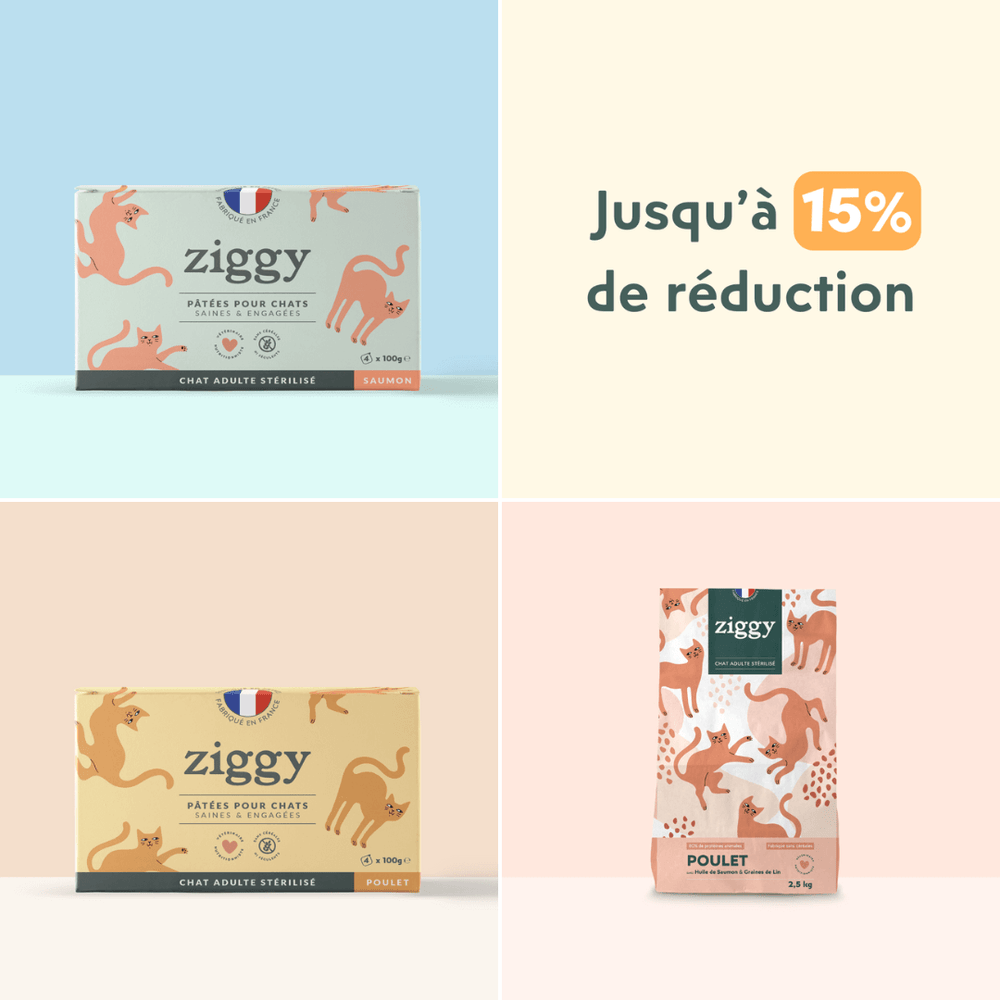
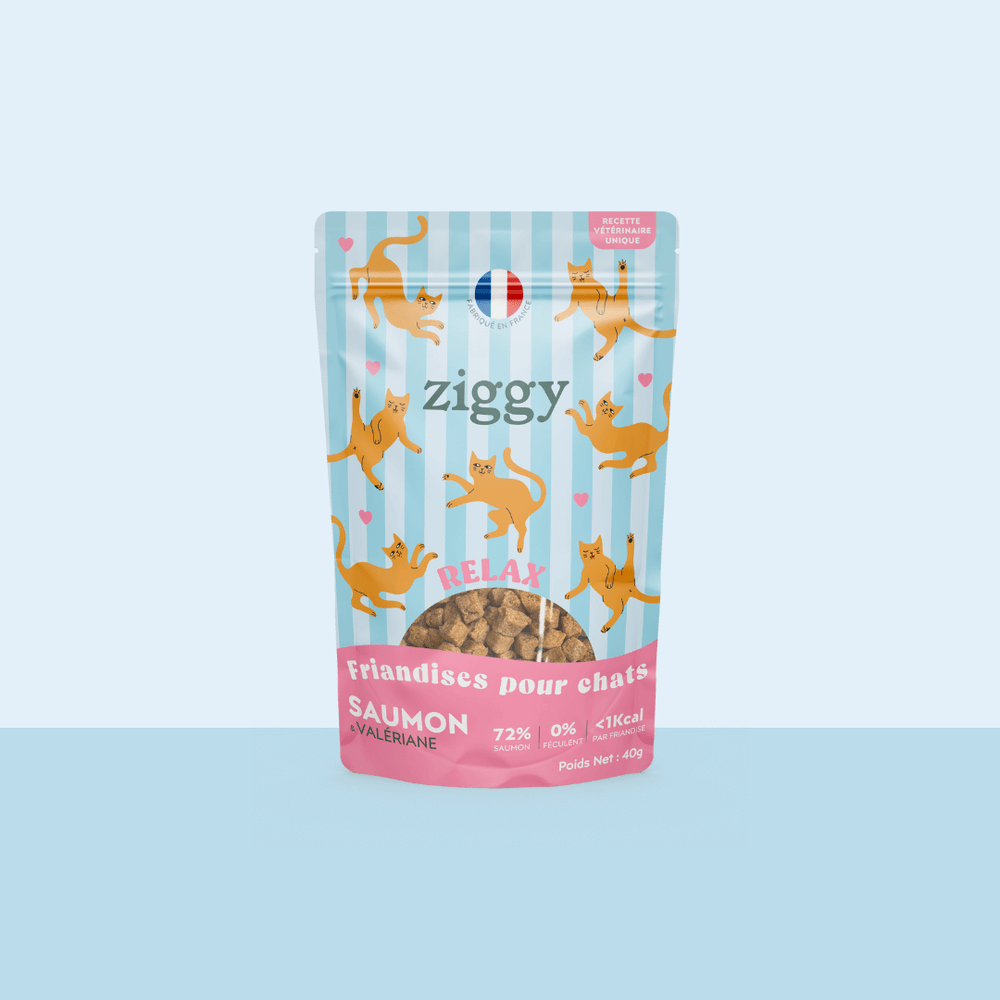
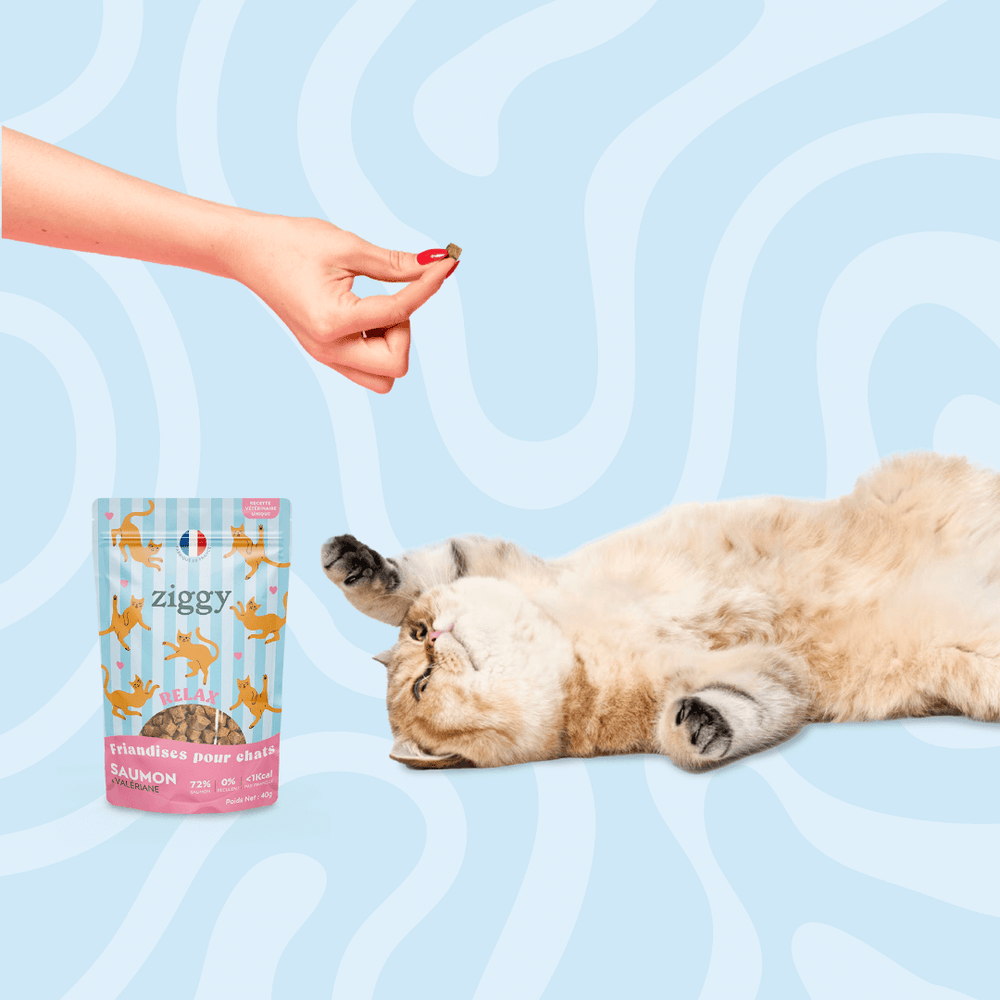
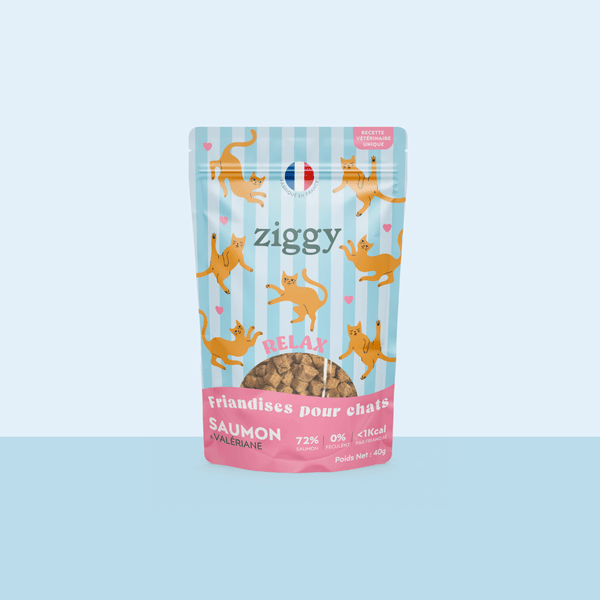
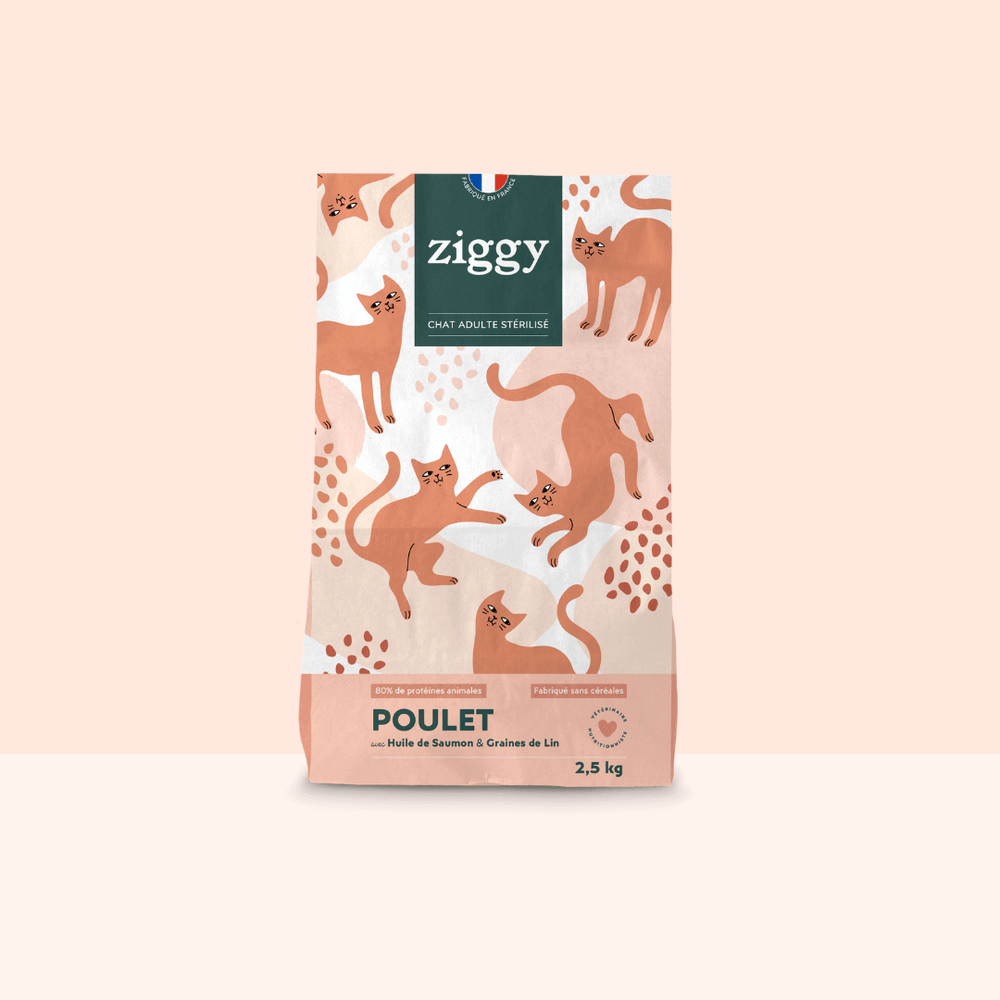

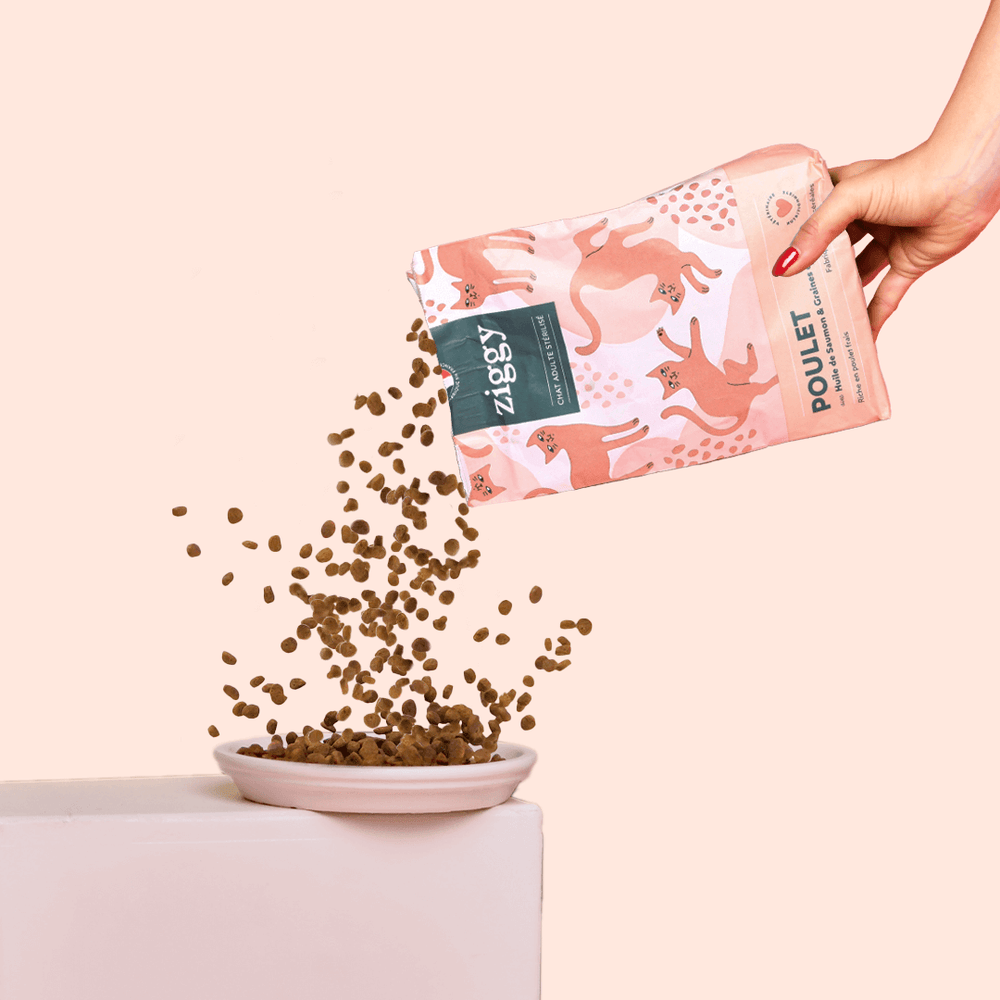
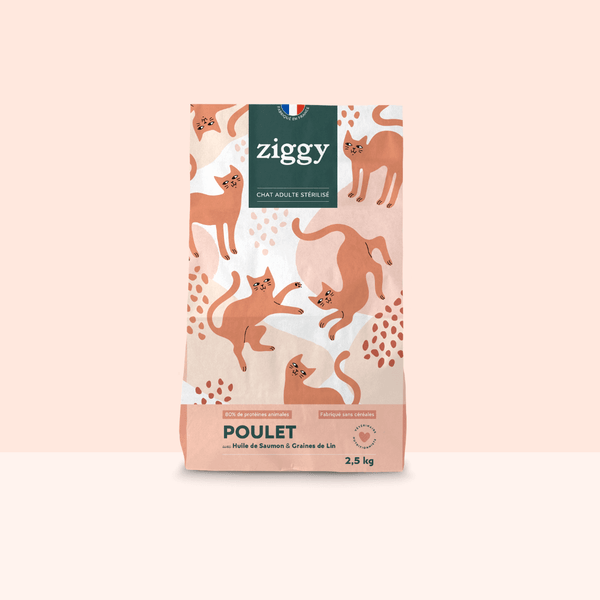

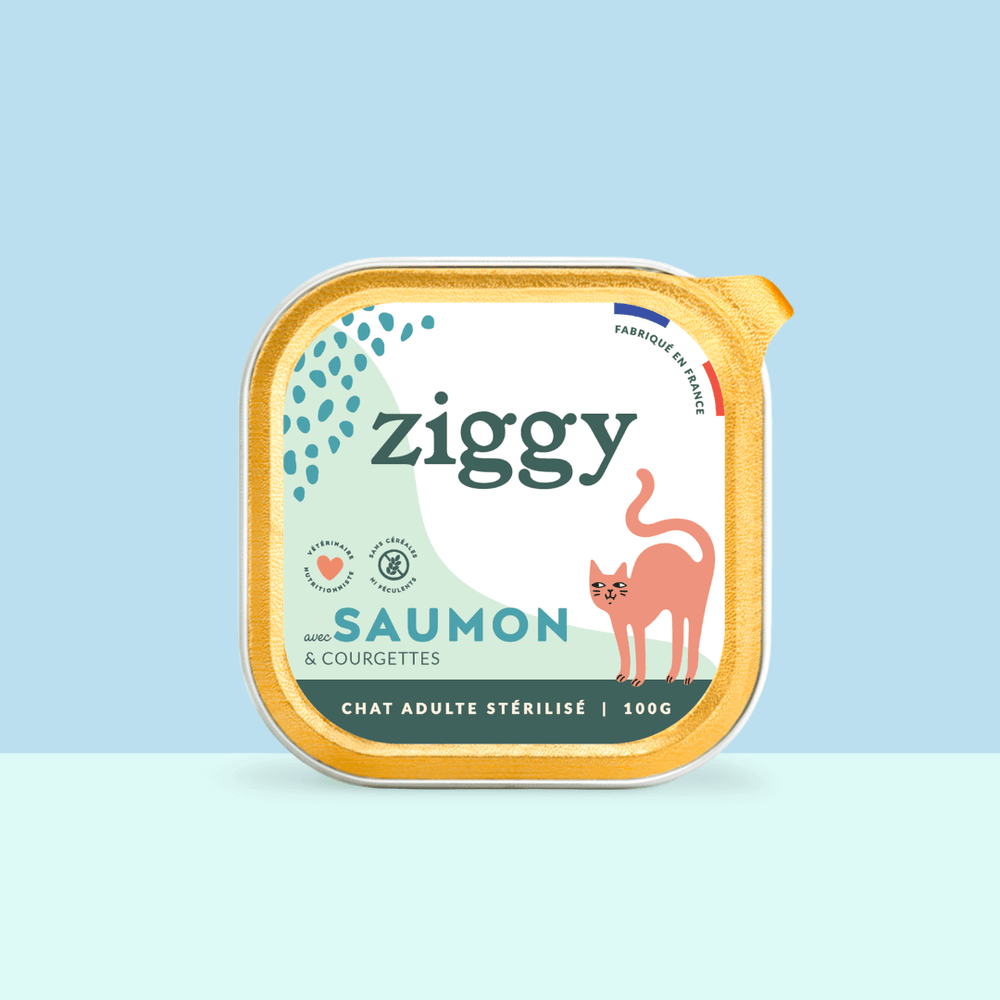

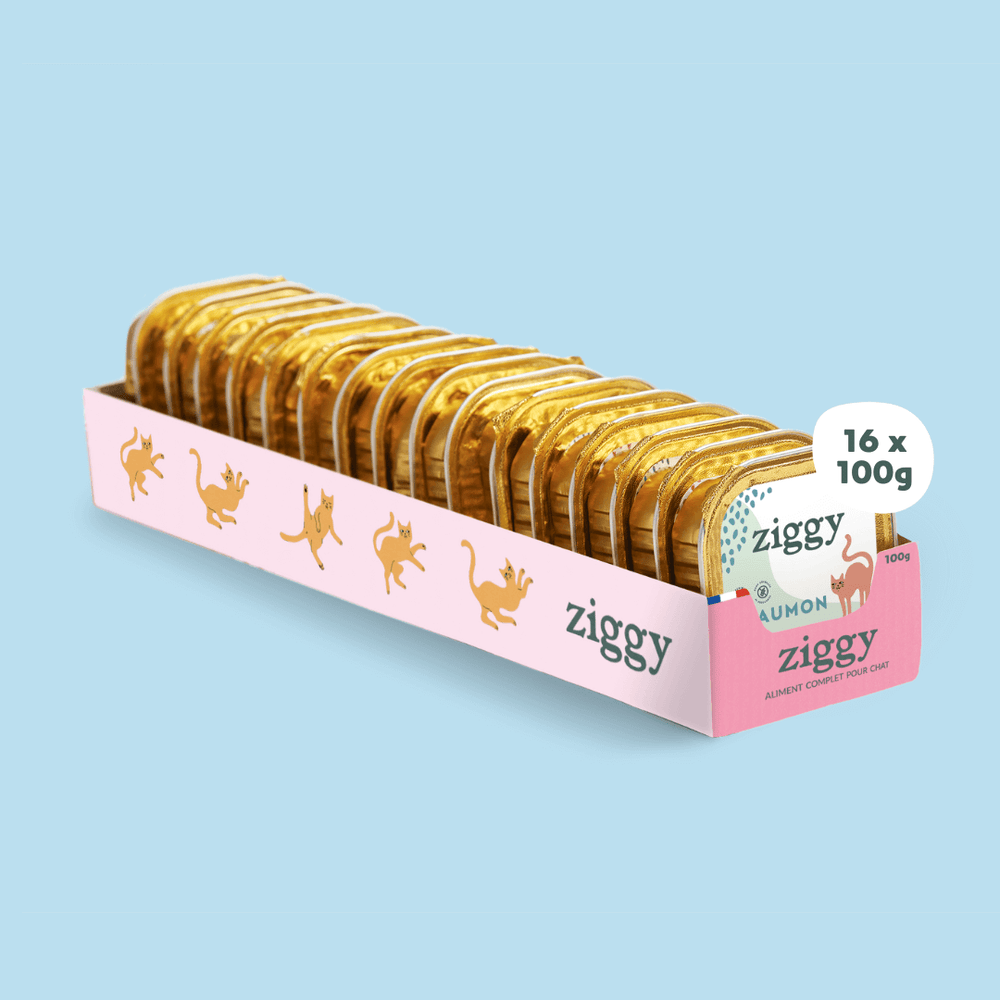
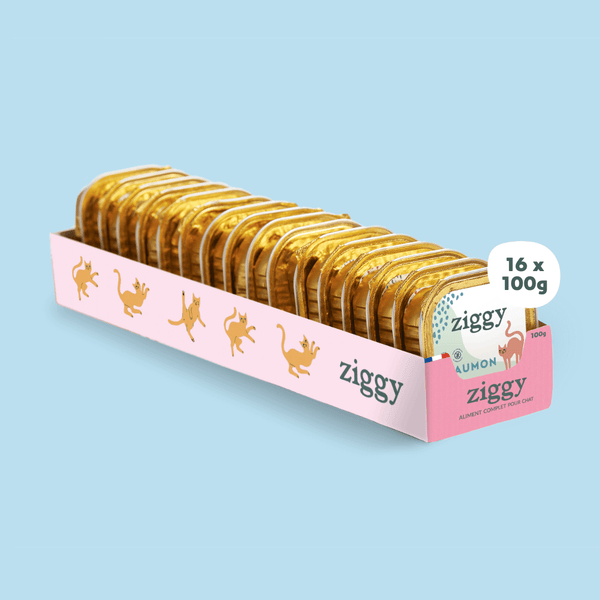




Bonjour Denis,
Merci pour votre commentaire. 💛
Avez-vous essayé la pâtée pour votre petite minette ?
La pâtée est très riche en eau et apporte du volume dans l’estomac, sans les calories qui vont avec ! Pour les chats un peu trop gourmands, la pâtée est idéale. 😺
Vous pouvez aussi parier sur la courgette ; quelques dés cuits à la vapeur que vous pouvez ajouter à ses petits repas.
Si vous le souhaitez, n’hésitez pas à nous contacter par email à hello@ziggyfamily.com Émilie, Xinaïs et Balthazar vous donneront plein d’autres conseils.
Plein de caresses à votre petite gourmande.
L’équipe Ziggy
Ma vétérinaire m’a dit de mettre ma minette au régime donc elle n’a plus de croquettes à volonté. Nous lui donnons 50 grammes par jours mais elle réclame toute la journée est elle mangé trop vite que faire elle miaule très souvent pour réclamer en plus elle en a pas la nuit.
Leave a comment